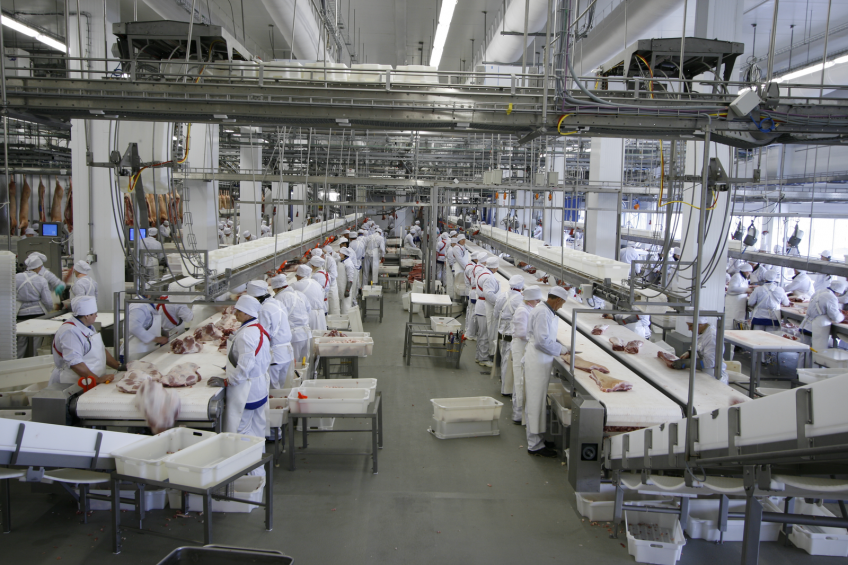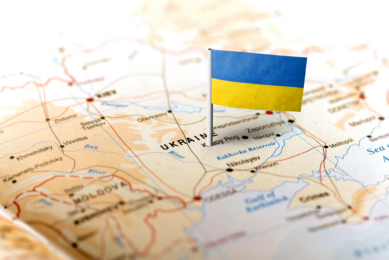Russian industry profiting from sanctions – for now

So far, the war of sanctions appear to be the lifeline Russia’s pig industry was ?hoping for. Still, the country’s industry is facing some serious challenges. How the industry will develop largely depends on the Russian government.
By Vladislav Vorotnikov
In early August 2014, the Russian government decided to apply trade restrictions on food supplies, including pork from the European Union (EU), the United States, Canada and various other countries in relation to the geopolitical conflict in Ukraine. The ban was said to last a year, and Russian authorities emphasised the measure would be temporary.
Nevertheless, there is reason to believe that Russia prefers pork imports to be something of the past, for good. Simultaneously with the announcing of the bans, the country embarked on a long-term programme to develop Russia’s meat industry, including the pig sector, based on the latest market conditions.
Ever since, the Russian authorities and the pork industry have disagreed on the impact these sanctions might have on the development of Russia’s pig industry. On one hand, the authorities tell the business community that the sun has started to shine for them; pork producers on the other state their future is not yet fully clear due to this ‘war of sanctions’, as it has resulted in a reduction of investments for new projects.
Profitability
The geopolitical sanctions in summer 2014 came on top of earlier Russian sanctions on EU pork imports, imposed as a result of the occurrence of African Swine Fever in the Baltic States and eastern Poland. The import bans allowed most Russian producers to achieve levels of profitability once more. Not being able to do so had mainly been related to Russia’s accession to the World Trade Organization (WTO) last year. As a result, pork prices dropped substantially on the Russian market. Figures of the Russian Pork Producers Union (RPPU) indicated that in the middle of the first quarter of 2013, the average level of pig farm profitability dropped from 20-25% to minus 15-20%.
No wonder then that the RPPU considers the ‘war of sanctions’ to be nothing less than a life-line. Referring to the WTO accession, the organisation stated: “The long-term preservation of this situation for the industry which was in the middle of a phase of development investments would have a very negative impact on production growth.”
The ban on EU pork imports resulted in a sharp pork price increase by 40-60%, depending on the region, since the beginning of the year. In the first half of 2014, for instance, Cherkizovo’s profits rose to US$115.2 million. The company’s general director Sergei Mikhailov stated in a press release, “After a very difficult first half of 2013, when the company teetered on the brink of losses, in the first half of 2014, Cherkizovo got back to the normal level of profit.” Similarly, Russia’s largest pork producer, Miratorg, expects to see net a year-on-year profit increase of 35% to US$331 million in 2014.
Top 20 producers
After an absence of investments over the past two years, virtually all pork producers in Russia, including Miratorg, Cherkizovo, Agro-Belogorie and others, have returned to planning new pork projects.
This was confirmed in a market investment research, set up by RPPU in September 2014, which shows that the companies intend to meet the government’s recommendations and boost the volume of production to bring the country to pork self-sufficiency by 2018. This is three years quicker than a previous plan for the industry, which scheduled self-sufficiency to be achieved by 2021.
A veterinarian checking samples on a farm in Belgorod. Using quality control checks help increase the standards of Russian pig farms.
Photo courtesy of Miratorg
The NPPU commented in this research: “Over the next few years the industry plans to increase the volume of pork production by at least 1 million tonnes carcass weight. About 80-90% of growth will be accounted for by the top 20 largest companies.”
As a result, the share of the top 20 of pork producers in the total pork production industry will rise from the current 49% to 62% by 2018. The report also states that during 2014-2018 the business is willing to invest about 180 billion roubles (US$4.5 billion) in both pig farms and meatpacking plants, provided that the government will continue its current policy of providing soft loans to meat producers.
Additional federal contributions in the form of subsidies in this period will amount to 3-5 billion roubles (US$76-127 million). If these plans are implemented, the imports, which today amount to 25-30%, will drop in a few years to about 10%, which the country’s government recognises as self-sufficiency. The government also plans to abandon subsidising of the industry after 2018, if self-sufficiency is reached.
The report states, “In recent months, price trends in the market have prompted major companies to consider plans to further increase annual production by another 250,000-300,000 tonnes, which will speed up the process of import substitution. The forecast of total pork production in Russia up to 2020 shows that in the case of implementation of these plans, already in 2018 Russia will achieve a reduction in import dependence – to below 15%.”
Challenges
Two challenges can be observed for the Russian pork industry as a result of the ‘war of sanctions’. The first is the fact that even under favourable market conditions it will be difficult to implement new projects without the presence of government support. Secondly, due to the economic unfavourable general condition, government support might fall away at any time.
Yuri Kovalev, RPPU’s CEO, told Pig Progress that sanctions might lead to a decrease of money coming in on a federal level – hence the risk of a limitation of public spending is never far off. The RPPU calculated this has already happened in recent years. Kovalev said, “Over the past year, industrial pig farming has grown 25%, but this is mostly the effect of prior investments.” Over the last two years, new investment projects have not been considered.
Nevertheless, in the context of the sanctions, the government has promised to create a new programme for pig breeding development. Having limited budgets, however, exact amounts still have to be finalised.
In addition, there are worries about the consequences of the ‘war of sanctions’ as they hit the Russian Agricultural Bank. This is a specialised Russian bank providing loans for agricultural projects. The bank’s management indicated that it has already been experiencing difficulties with raising funds to support new projects.
In the future, this might not only endanger the implementation of projects that are under negotiation, but also the ones that are currently being implemented.
[Source: Pig Progress Vol 30 nr 9, 2014]











